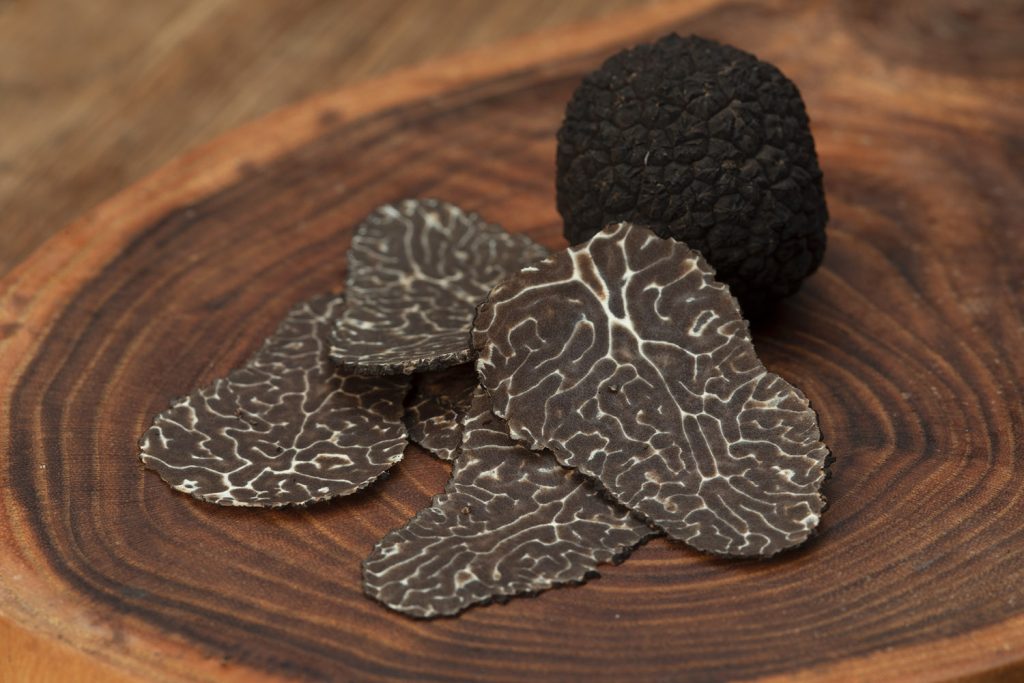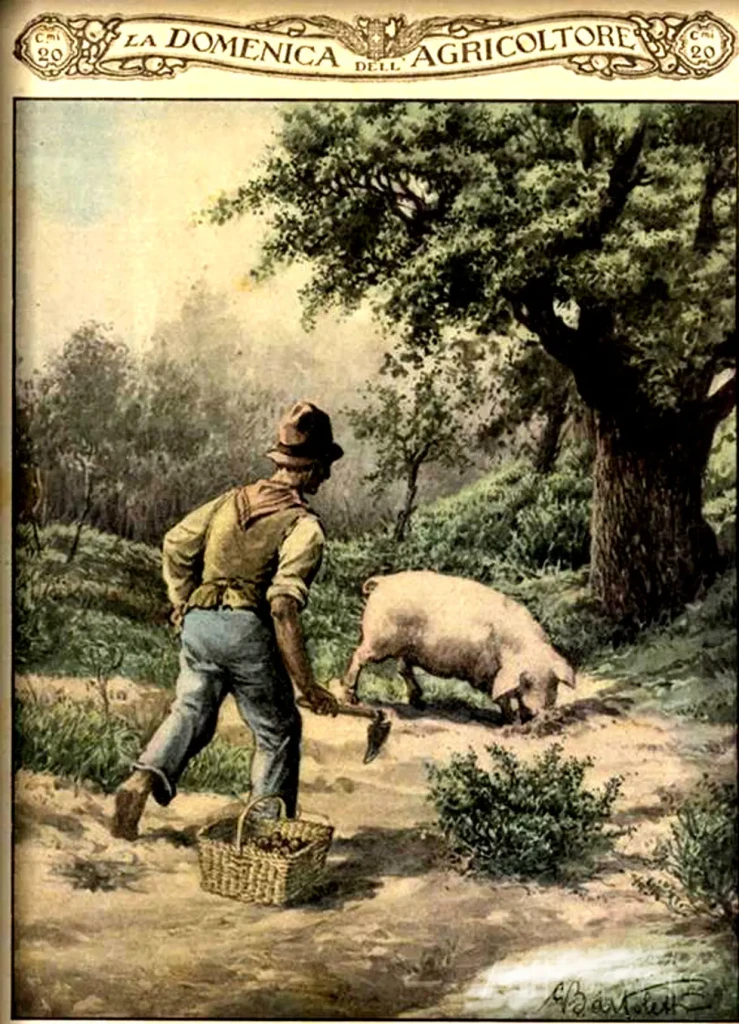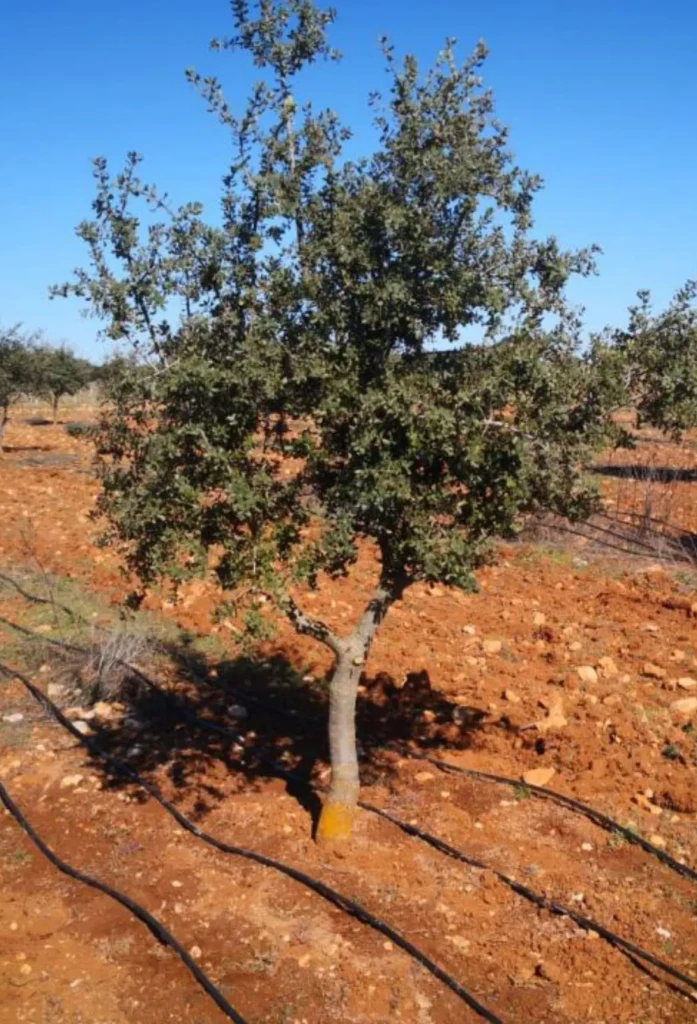Truffles in Renaissance Europe: use, hunting, and cultural significance
France
Use: During the Renaissance, truffles were mainly collected in southern regions such as Provence and Périgord. They became particularly prized at the French court, especially toward the end of the Renaissance under Louis XIV. Truffles were served in meat dishes, pies, and as part of lavish banquet menus.
Hunting: Traditionally hunted using pigs, due to their ability to detect the truffle’s strong scent. Later, dogs were trained to do the same. Truffle hunting was often secretive, as truffle spots were highly valuable.
Cultural role: French Renaissance humanists, such as François Rabelais, referenced truffles in their works as symbols of sensual pleasure and earthy indulgence.
Italy
Use: In city-states like Florence, Perugia, and Alba, truffles were an elite delicacy. The Medici family were known to enjoy them. The White truffle (Tuber magnatum) from Piedmont was especially prized.
Hunting: Italian peasants used trained dogs, and the knowledge of truffle locations was passed down through families. It was often a closely guarded tradition.
Cuisine: Truffles were grated onto pasta, mixed into egg dishes, or preserved in oil. They appear in recipes from Bartolomeo Scappi, the private chef of Pope Pius V, who authored a detailed cookbook in 1570.
Spain
Use: Truffles were less widely used during the Renaissance in Spain than in France or Italy, but were still known among the nobility. Regions such as Aragon and Catalonia had local knowledge of truffle foraging.
Hunting: Documentation is scarcer, but pigs or dogs were likely used. Truffles were not as embedded in culinary texts as in France or Italy.
Cultural presence: Some references exist in courtly or medical texts, but they were not a widespread culinary staple.
Other European regions
Germany and Central Europe: Truffles were known in parts of southern Germany and the Alps, though not widely used. Their value was more medicinal or symbolic.
England: Rarely mentioned in the Renaissance. Truffles became more commonly known only in the 17th century and beyond.
Eastern Europe: Truffle knowledge was limited; the fungus existed naturally, but was not widely recognized in cuisine until much later.
Literary & Cultural References to Truffles
Platina – De Honesta Voluptate et Valetudine (1481)
One of the earliest printed cookbooks in Europe. Platina mentions the instinct of pigs in locating truffles:
“Nothing equals the instinct of the sows of Notza in finding Truffles hidden in the ground.”
This is one of the first published references to truffle hunting with pigs.
Durante da Gualdo – Treasure of Health (1590s)
A late Renaissance medical and dietary treatise that describes truffles as both desirable and dangerous:
“They are eaten raw and cooked… they excite the venereal appetites and multiply the sperm… but are windy, melancholic and hostile to the nerves.”
This reflects the common belief that truffles were aphrodisiacs, but also digestively and emotionally troubling.
Petrarch (Francesco Petrarca) – Canzoniere (14th century)
In letters and poetry, Petrarch references the mystical nature of truffles growing underground:
“Where the day never dawns, earthly humor becomes pregnant with itself, so that such and similar fruit can be reaped…”
This metaphor alludes to the hidden, mysterious nature of truffles — a symbol of sensual pleasure and natural abundance.
Truffles in Renaissance Cookbooks
Bartolomeo Scappi – Opera dell’arte del cucinare (1570)
Scappi’s book includes over 1,000 recipes, with detailed illustrations and courtly menus.
While no direct mention of “truffle” survives in widely available translations, culinary scholars agree truffles were likely used in:
Stuffings for poultry or game
Pies and pastries
Egg dishes and sauces
Scappi cooked for Pope Pius V and his cuisine reflects elite Renaissance tastes, where truffles were part of the flavor palette — even if not always listed by name.
The best edition for research is the 2008 Terence Scully English translation.
François Pierre La Varenne – Le Cuisinier françois (c. 1651)
Though just outside the Renaissance, this French cookbook represents the culinary evolution that began in that period.
It includes techniques such as duxelles (a mushroom mince), which may have involved truffles.
Truffles were highly valued in noble French kitchens, and likely featured in many now-lost or unnamed preparations.
Robert de Nola – Libre del Coch (1490 / 1520)
A Catalan cookbook, popular in Aragon and Spain, blending Arabic, French, and Italian culinary traditions.
No explicit mention of truffles (trufa, tòfona) exists in the preserved versions.
Focuses instead on spices, almonds, and meats; truffles may have been too rare to be common in Spanish court recipes of the time.







